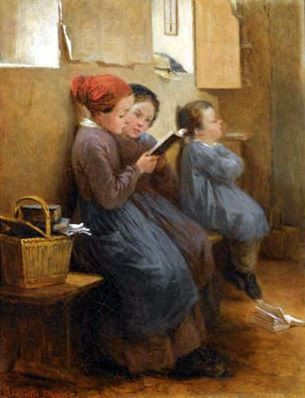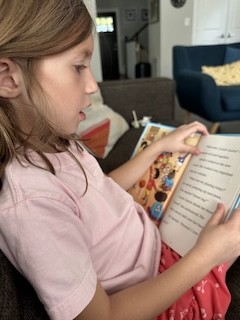Blast from the Past: First posted Janaury 12, 2019; re-posted April 19, 2022. So much has happened since this essay first appeared -- many students have missed large amounts of schooling and achievement results reflect that loss. Many teachers are seeking ways to supercharge achievement to try to make up for the decline This blog is an important reminder about why teachers need to curate the texts that are used for instruction. Teach reading with texts that have features students do not yet know how to negotiate and that expose students to the content they need to know. Choice is important. Encourage kids to read what they want when reading for pleasure, but teachers not carefully selecting the instructional texts to be used is a major lost opportunity.
As frequent readers of this blog know, there is an entire segment of the literacy community that thinks I’m an idiot.
I’ve been married for a long time, so those kinds of judgments don’t usually bother me.
But let’s be honest, we all like to be liked, so another blog about why kids learn less from reading on their own is probably not in my best interest. And, that is not what this blog is going to be about… or at least it is not what I wanted it to be about.
You see, over the holidays a friend posted a chart from a presentation at this year’s Literacy Research Association meeting. It included effect sizes for the impact of student choice on learning. The effect size for the impact of choice on reading motivation was .95 and it appeared to have an even bigger effect on reading achievement (1.20). With big-whomping payoffs like those you’d be foolish to assign books. Let ‘em read what they want to!
My interest was piqued.
I’ve long known that choice matters in motivation. I prefer doing what I want to rather than what others want me to do. I’ve written about the value of choice in teaching, but have pointed out that it didn’t have to be about which book to read—it could be about who to read with, which part of the room to read in, or even which order to fit this reading into the morning schedule.
But these statistics seemed to be saying that book choice is where the big payoff is and if that’s the case, I really missed the boat (in Chicago, missing the boat in January is a cold proposition).
I set out to write a mea culpa, mea maxima culpa kind of blog entry touting kids’ choice over teacher’s choice.
Except that isn’t what I found out when I looked into this.
Twitter indicated those statistics were from John Guthrie, an honest and rigorous researcher. (That meant to me that those statistics could be solid).
But the source was a chapter from a book called Voice of Evidence. It’s a good book, but books aren't usually good sources for research evidence. Chapters are not reviewed and edited as research.
The Guthrie and Humenick chapter aimed to answer the question, “What motivates students to read?” Instead of a traditional qualitative literature review, they reported a meta-analysis. But it wasn't reported like a research study, so you can't tell which studies were included the analysis.
They say that they included 22 experimental studies which offered up 46 effect sizes on student choice and its impact on reading. Based on this analysis they concluded that when kids are allowed to choose what they want to read there are big boosts to reading motivation and learning.
The chapter discussed a few of the meta-analyzed studies to illustrate their conclusions.
These descriptions surprised me. They revealed studies that weren’t so terrific for making this kind of judgment.
For example, one of them (McLoyd, 1979) had children examine 10 books and rate them in terms of interest. They then assigned half the children their first choices and the other half their last choices.
Yep, that’s right.
No one in this study chose anything. Everyone’s book was assigned. They either had to read a book they liked or a book they didn’t like. McLoyd let the kids read for a few minutes and then interrupted them, keeping track of how long they continued reading. The kids who were assigned books they liked read a bit longer than the ones assigned books that they didn’t.
That’s a big confound of choice and interest. That kids spend more time reading books they like than books they don’t isn't that surprising. (Of course this is in contrast to my belief that children spend more time “eating” asparagus than ice cream; but that’s quite another matter).
Another of the studies (Reynolds & Symonds, 2001) also confounded choice and interest to the point where, again, I was stuck concluding that kids would rather learn about something they were interested in, than being assigned stuff they were not. But choice is the issue in this only if you think teachers always assign what kids don’t like.
Another strange choice of a study was that of Lesley Morrow (1992). In this study, students were assigned to one of two treatments. One provided students with instruction and workbook activities from their basal readers. The second provided students with much the same instruction, though abbreviated a bit to open up some time to allow for students to read self-selected books from classroom libraries and to receive additional lessons and activities based on those books.
No question that the free choice group out-performed the comparison group but was that outcome difference due to choice?
The choice group was required to read more and to do more reading lessons. They had access to a classroom library (complete with rocking chairs, felt-boards, and other materials). The children in the choice group all received subscriptions to Highlights magazine so they could read at home (and half of this group received instructional support from their mothers with these library books).
Complex interventions of this type may work, but this kind of study cannot reveal the active ingredients. Was it the extra reading lessons? The increased amount of reading? The Hawthorne effects due to the attractive new libraries added to the classrooms? The magazine subscriptions and increased reading at home? Or was it that the kids got to choose some additional books (to the textbooks)?
Meta-analysis can be terrific but including studies that look at fewer than 10 minutes of reading or that are so confounded that it is impossible to attribute the impact to the variable of interest is sure to undermine its value.
Student text choice likely has some payoff in terms of motivation. But its impact on achievement may be much smaller than these Twitterverse postings would suggest. I’d still be hesitant to make student book choice a big part of my reading instruction.
Why would I be hesitant to have kids select the books?
Kids have to learn to negotiate text complexity. Teachers (and publishers) should be selecting texts that will challenge kids in particular ways.
These challenges might be simple and straightforward: particular vocabulary the kids are unlikely to know, or sentences that have particular kinds of complexity (like passive voice or especially long noun phrases or compound verbs).
Or, they might be structurally or conceptually complex. Stories with multiple protagonists or that include flashbacks, or informational texts that challenge one’s perceptions as science texts sometimes do.
With such texts, teacher can guide students to confront these interpretive problems.
When kids do the picking, it is less certain that their choice will present such confrontations, and even when they do, the teacher would less likely be in position to add the essential teaching that would help the student to transform this confusion into learning.
There is a place for student book choice within reading instruction, but it is much smaller than those Twitter charts may suggest.
There is a good lesson in this for those educators who think they can just take John Hattie’s chart of effect size as the source for school improvement efforts. You cannot interpret effect sizes without some awareness of the original studies included in the analysis. The old adage garbage in, garbage out still applies.
References
Guthrie, J. T., & Humenick, N. M. (2004). Motivating Students to Read: Evidence for Classroom Practices that Increase Reading Motivation and Achievement. In P. McCardle & V. Chhabra (Eds.), The voice of evidence in reading research (pp. 329–354). Paul H Brookes Publishing Co..
McLoyd, V. C. (1979). The effects of extrinsic rewards of differential value on high and low intrinsic interest. Child Development, 50(4), 1010–1019. https://doi.org/10.2307/1129327
Morrow, L. M. (1992). The impact of a literature-based program on literacy achievement, use of literature, and attitudes of children from minority backgrounds. Reading Research Quarterly, 27(3), 250–275. https://doi.org/10.2307/747794
Reynolds, P.L., & Synons, S. (2001). Motivational variables and children's text search. Journal of Educational Psychology, 93(1), 14-22.







Comments
See what others have to say about this topic.